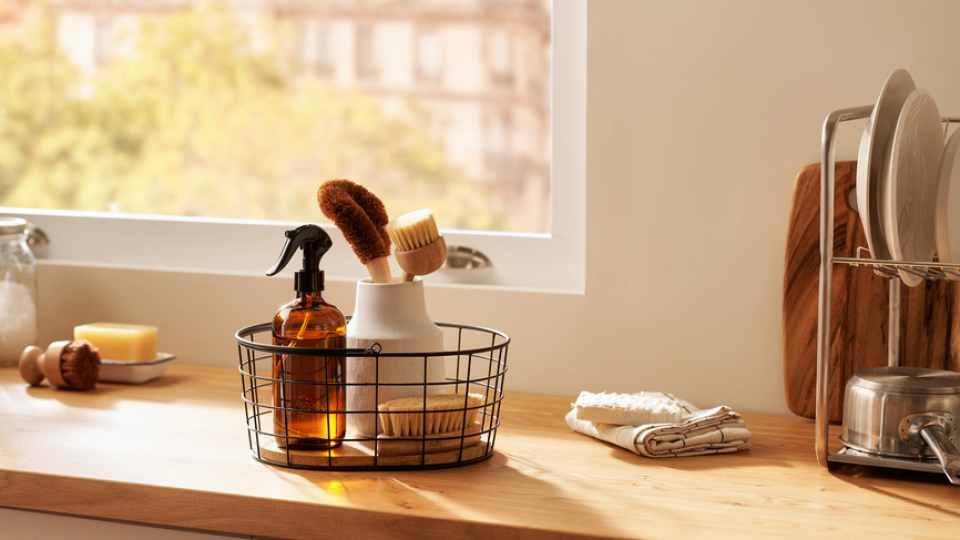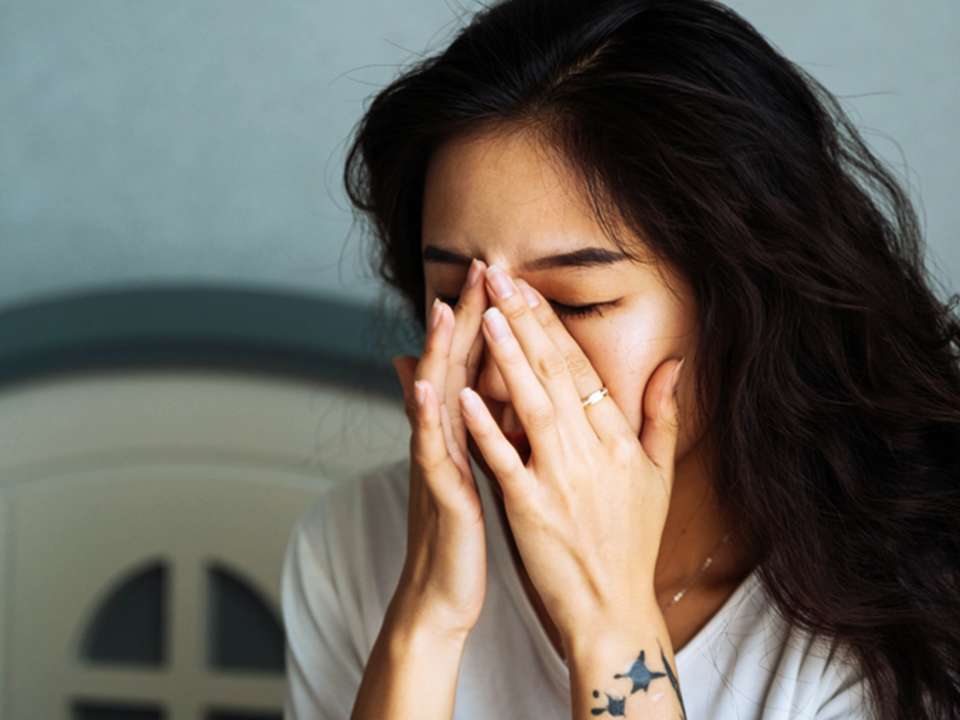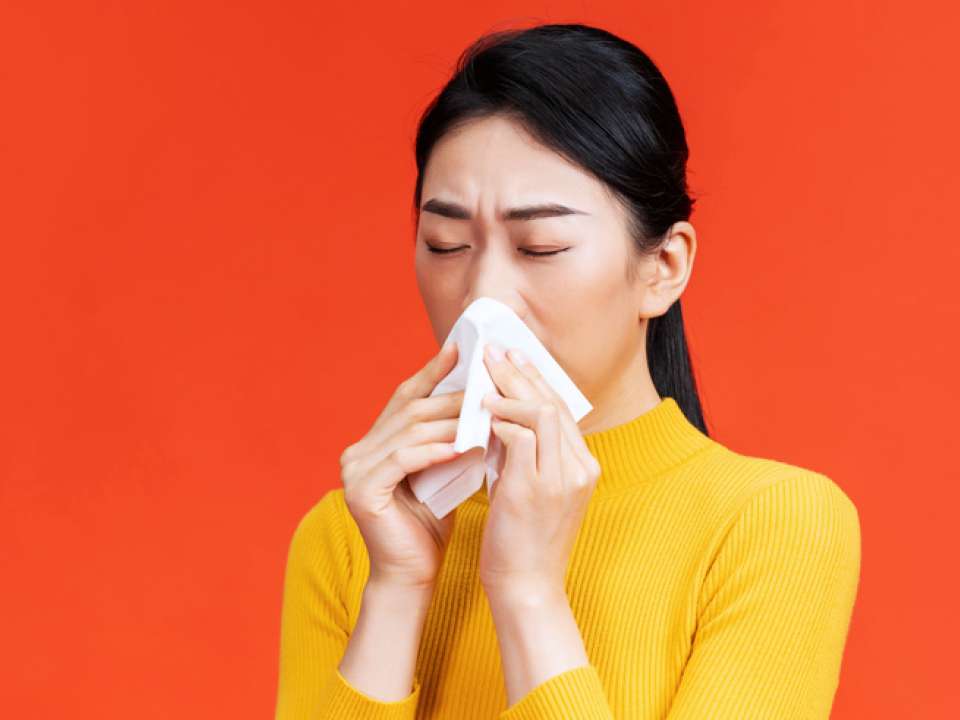
Sometimes, nothing feels better than a clean home, complete with freshly disinfected counters, scented garbage bags and a few lit candles. It smells squeaky clean and looks good, too, but … you might want to take a second look at the products you’re using. These popular products often do more harm than good in our attempts to have a healthy, pollutant-free home.
Even common appliances are polluting homes. Gas stoves are the latest to reappear in headlines, with researchers pulling ongoing research that children who grow up in a home with a gas stove have an increased risk of developing asthma.
MaryKate Cardon, co-director of the UW Northwest Pediatric Environmental Health Specialty Unit, says that some in-home products that are meant to produce or mask odors (think: air fresheners, diffusers and candles) can also cause upper respiratory irritation among other symptoms, especially for those who are more sensitive or have conditions like asthma.
But indoor sources of air pollutants aren’t just limited to the products and appliances used inside the home. They extend to pests, gases and above all — human behavior.
We won’t ask you to change your routine or ditch your favorite products altogether. But there are actions you can take to build a healthier home for you and your loved ones.
Common types of indoor pollutants
Indoor pollutants can come from various circumstances, some in and some out of your control. For example, mold, pests and asbestos could be the result of where you live, which may make it difficult to fix on your own. Additionally, wood and gas stoves can cause smoke that pollutes the home — but no one expects you to get a new stove tomorrow.
However, many changes can be made to your habits or behavior that could reduce the number of pollutants in your home. This includes not smoking inside the house, closing doors and windows when the outdoor conditions aren’t favorable (wildfire season, for example) and taking care that you don’t track in pesticides, lead or other particles if you work in those kinds of environments.
Finally, the products you use inside your house might also do more harm than good, even if they are advertised as cleaning your home.
“People use disinfectant products like sprays and wipes with the intent of making their homes cleaner and keeping their families safe and healthy,” says Cardon. “So it may surprise people that exposure to the chemicals in some of these products can have negative health impacts, particularly when they’re not handled, applied and stored properly.”
Dangers of indoor pollutants
To call something an indoor pollutant could sound scary or life-threatening. Cardon says that the level of impact depends on how the products are used and individual susceptibility.
“Health effects from exposure to indoor pollutants depend on several factors, including individual factors like age and underlying health status,” says Cardon. “It could also depend on the pollutant a person is exposed to and the nature of the exposure, such as the duration or amount of exposure.”
Many indoor pollutants cause immediate and noticeable symptoms, like itchy eyes and runny nose. Others, Cardon notes, can be insidious and harder to detect, like carbon monoxide — which can be deadly — and lead exposure in childhood, which can lead to poor neurodevelopmental outcomes later in life.
And while it might not be possible to completely rid your home of all pollutants, small changes can impact your home’s safety — and your health.
“Improving home health is important for everyone, but especially important to think about if there are children, pregnant individuals and other vulnerable people living there,” says Cardon.
What’s the best way to reduce exposure to indoor pollutants?
Ready to clear the air? Try using these tips.
Reevaluate your cleaning methods
First things first: If you have chemicals like cleaning products, paints or solvents in your home, make sure they’re stored properly. This means that they should be in their original containers, locked and out of reach of children. Using safer cleaners like vinegar, baking soda and lemon juice is better for routine cleaning. Water or soapy water are also great alternatives.
For other pollutants like dust, pollen or dander, make sure to vacuum your carpet regularly.
“You can also reduce exposure to pollutants that may collect in dust, like lead, by taking simple steps like regular wet mopping and dusting, and washing children’s hands and objects they may mouth regularly,” says Cardon.
Check your appliances yearly
Fuel-burning appliances and heaters are a common source of carbon monoxide. If you want to make the switch to electric, that’s great, but many people can’t. Because of this, if you have gas appliances, get them checked yearly by a professional if that resource is accessible. And in between checks, you can use your vent or opening a window while you cook to reduce your exposure.
Make sure to remove dryer lint from your vents throughout the year, and if you have a chimney, get it checked and professionally cleaned before using it (or ask your landlord if it's safe and clean to use). Gas chimneys can be a source of carbon monoxide, and wood-burning chimneys can bring smoke into the house.
Cardon says it is also critical that people install smoke and carbon monoxide detectors throughout the home and to regularly check that they’re functioning properly. She also mentions testing your home for radon, an invisible gas that comes from natural elements in the ground, and taking steps to address it if it’s detected.
Get rid of pests
Insects or pests inside the home can be biologic pollutants, which can be hazardous to your health. Use traps or snares for cockroaches, mice and rats to prevent them from venturing around your home. Put away all food and water at night before going to bed so small critters aren’t attracted to the inside of your house or apartment.
Use air cleaners
Yes, they really work. Cardon says that portable air cleaners — commonly known as air purifiers — can improve indoor air quality by filtering out harmful particles in an area or room.
“Filtration, in combination with ventilation, is an effective way to reduce indoor pollutants,” says Cardon. “Filtration alone, however, can’t remove all harmful particles from the air, and most air cleaners can’t remove harmful gases, so the term air purifier can be misleading.”
This is why it’s important to use an air cleaner as one step in removing pollutants from your home and not rely on it entirely to keep you healthy while you’re inside.
Prioritizing home health wherever you are
A lot of changes at once can be daunting, and not all changes are accessible. Start where you can: Make sure you have smoke and carbon monoxide detectors, test for harmful gases and swap cleaning products. If you can’t do without your candles, that’s OK — but do some research to find ones with the least amount of chemicals to use in your home. And remember, these are steps everyone can take, not just those with large houses.
“This doesn’t only apply to homeowners,” says Cardon. “Renters and landlords have rights and responsibilities to preserve the health of the home and its tenants. There are resources out there if you need help, guidance or remediation.”
Editor’s note: This article was updated on April 25, 2023, to include sources explaining how insects and pests can impact indoor air quality and to remove the inclusion of spiders as pests. Learn more about common misconceptions about spiders.

 Healthy ideas for your inbox
Healthy ideas for your inbox





